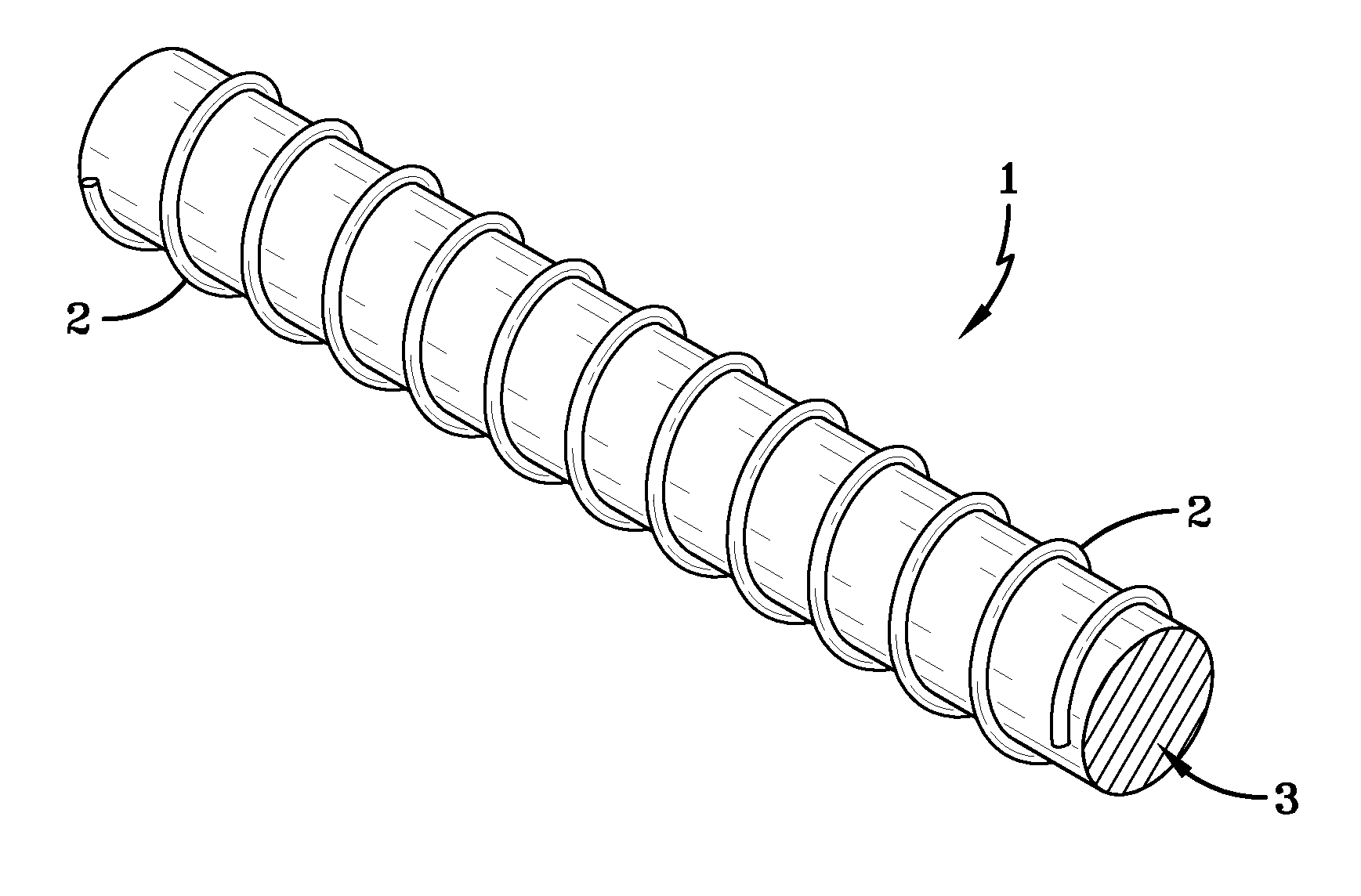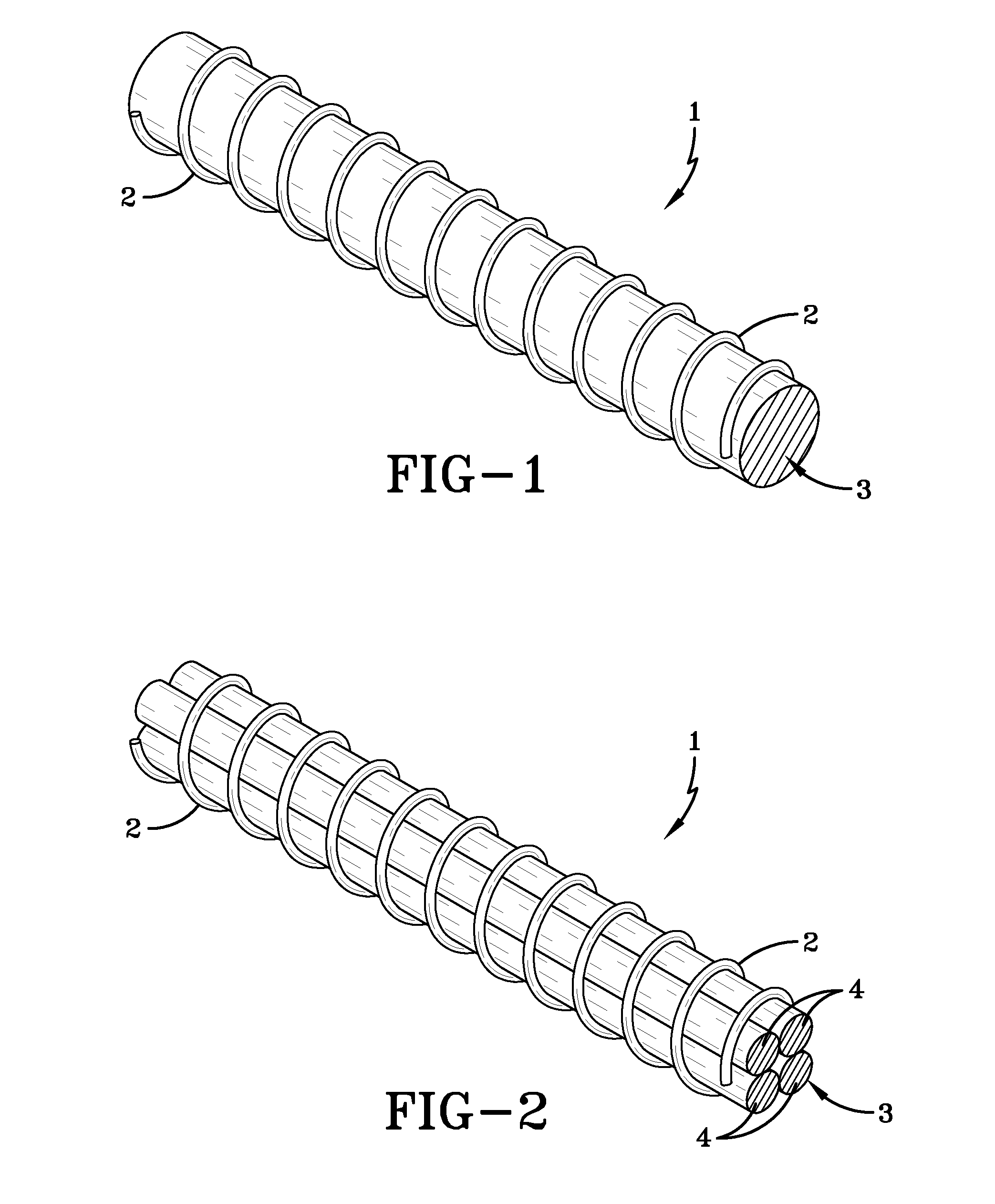Conveyor belt rip detection system with microwire sensor
a detection system and conveyor belt technology, applied in conveyor parts, transportation and packaging, rubber insulators, etc., can solve the problems of high cost component of industrial material handling operation, rip, slit, cut or tear within the belt, etc., to increase the durability and service life of the rip detection system, improve the service life, and reduce maintenance costs and downtime.
- Summary
- Abstract
- Description
- Claims
- Application Information
AI Technical Summary
Benefits of technology
Problems solved by technology
Method used
Image
Examples
Embodiment Construction
[0026]The conveyor belts of this invention include a rip detection sensor which is in the form of a microcoil sensor wire, wherein the microcoil sensor wire is configured in an endless loop and wherein the microcoil sensor wire is comprised of an elastomeric core having an electrically conductive wire spirally wrapped around the elastomeric core. Such a microcoil sensor wire 1 is illustrated in FIG. 1 wherein the electrically conductive wire 2 is spirally wrapped around a single elastomeric core 3. In another embodiment of this invention as depicted in FIG. 2 the elastomeric core 3 can be comprised of a plurality of elastomeric filaments 4 which form the elastomeric core 3. In any case, the elastomeric core 3 will be comprised of a rubbery material, such as a thermosetting rubber or a thermoplastic elastomer. For instance, the rubbery material can be natural rubber a synthetic rubber, such as a polydiene rubber. Some representative examples of materials that can be used as the elast...
PUM
| Property | Measurement | Unit |
|---|---|---|
| elongation to break | aaaaa | aaaaa |
| elongation to break | aaaaa | aaaaa |
| elongation to break | aaaaa | aaaaa |
Abstract
Description
Claims
Application Information
 Login to View More
Login to View More - R&D
- Intellectual Property
- Life Sciences
- Materials
- Tech Scout
- Unparalleled Data Quality
- Higher Quality Content
- 60% Fewer Hallucinations
Browse by: Latest US Patents, China's latest patents, Technical Efficacy Thesaurus, Application Domain, Technology Topic, Popular Technical Reports.
© 2025 PatSnap. All rights reserved.Legal|Privacy policy|Modern Slavery Act Transparency Statement|Sitemap|About US| Contact US: help@patsnap.com



